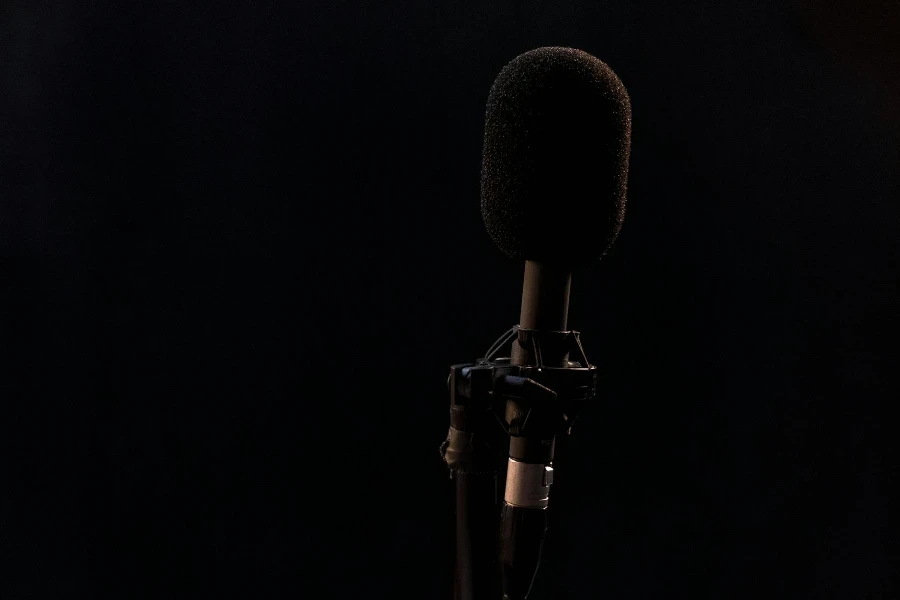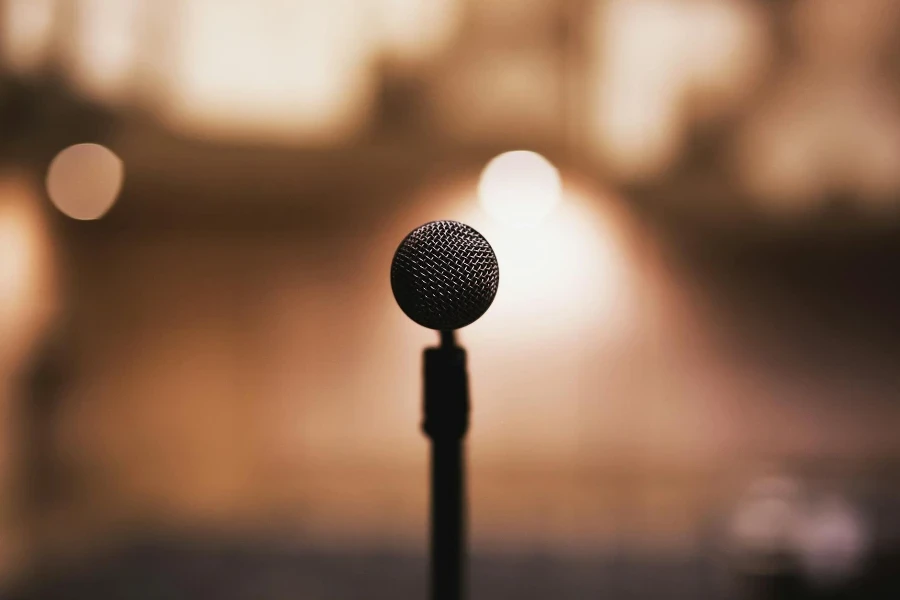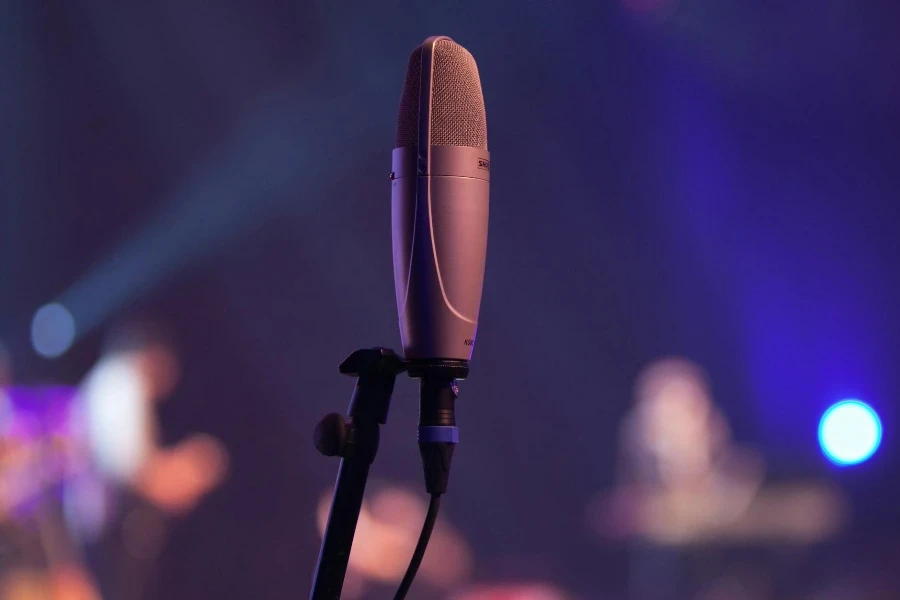Mic stands are an essential tool for musicians, podcasters, and anyone involved in audio production. They not only hold microphones securely in place but also contribute to the overall sound quality and ease of use during recordings or live performances. This guide will explore the intricacies of mic stands, how they function, and what to consider when selecting and utilizing them to their fullest potential.
Table of Contents:
1. What is a mic stand?
2. How does a mic stand work?
3. Benefits and drawbacks of a mic stand
4. How to choose a mic stand
5. How to use a mic stand
What is a mic stand?

A mic stand is a free-standing mount or support designed to hold a microphone at the desired height and angle for the user. It serves as a crucial piece of equipment in various settings, from recording studios and live stages to home studios and podcasting setups. Mic stands come in different shapes and sizes, each catering to specific needs and applications. The primary purpose of a mic stand is to provide stability to the microphone, preventing handling noise and allowing the user to move freely without compromising sound quality.
Mic stands are constructed from a variety of materials, including metal, plastic, and sometimes carbon fiber, to offer durability, flexibility, and portability. The design of a mic stand includes a base, a shaft (which may be adjustable), and a microphone clip or holder at the top. Some models also feature boom arms, which extend the reach of the stand and allow for more precise microphone placement. The versatility of mic stands makes them indispensable in achieving optimal microphone positioning, which is crucial for capturing clear and balanced audio.
The evolution of mic stands has seen the introduction of features such as pneumatic height adjustment, quick-release mechanisms, and foldable designs for enhanced portability and ease of use. These innovations have made mic stands more user-friendly and adaptable to the diverse needs of audio professionals and enthusiasts alike.
How does a mic stand work?

The functionality of a mic stand is relatively straightforward, yet its design and features play a significant role in its effectiveness. The base of the stand provides stability, preventing it from tipping over when a microphone is mounted. This base can either be a tripod, which spreads out for a wide stance, or a round, heavy base for a more compact footprint. The choice between these bases often depends on the available space and the specific application.
The height and angle of the microphone are adjusted through the stand’s shaft and, if present, a boom arm. The shaft typically features a telescoping design, allowing the user to raise or lower the microphone to the desired height. A boom arm, which can be attached or built into the stand, offers additional adjustability by extending the reach of the microphone and enabling fine-tuning of its position. This is particularly useful in situations where direct stand placement in front of the performer or speaker is not feasible.
Microphone clips or shock mounts are used at the top of the stand to secure the microphone in place. Clips are designed to hold the microphone directly, while shock mounts provide an isolation barrier against vibrations and handling noise, further improving sound quality. The combination of these components allows for a wide range of microphone positioning options, enabling users to achieve the best possible audio capture for their specific needs.
Benefits and drawbacks of a mic stand

Mic stands offer several benefits to users, the most significant being improved sound quality. By providing stable and adjustable microphone placement, mic stands help in reducing unwanted noise, such as handling sounds and vibrations. They also free up the hands, allowing performers, speakers, and audio engineers to focus on their performance or other tasks. Additionally, the use of a mic stand can contribute to a more professional appearance and setup, which can be particularly important in live performance and broadcasting contexts.
However, mic stands are not without their drawbacks. They can be cumbersome and take up valuable space, especially in smaller studios or stages. The process of setting up and adjusting mic stands to the perfect position can also be time-consuming. Furthermore, the cost of high-quality, durable mic stands can add up, particularly for those requiring multiple stands for various applications.
How to choose a mic stand

Selecting the right mic stand depends on several factors, including the intended use, the environment it will be used in, and the type of microphone. For studio recordings, a stand with a solid base and a boom arm offers flexibility and precision in microphone placement. For live performances, durability and ease of adjustment are key, making stands with quick-release mechanisms and robust construction preferable.
The weight and size of the microphone also influence the choice of mic stand. Heavier microphones require stands with a sturdy base to prevent tipping, while smaller mics might be suited to more lightweight stands. Considering the portability of the stand is crucial for those who frequently travel for performances or recordings.
How to use a mic stand

Using a mic stand effectively involves proper setup and adjustment to suit the specific recording or performance situation. Start by placing the stand on a stable surface and adjusting the base or tripod legs for maximum stability. Attach the microphone to the clip or shock mount, then insert it onto the stand. Adjust the height and angle of the stand so that the microphone is positioned optimally for capturing sound, considering the direction and distance from the sound source.
When using a boom arm, balance is key. Ensure the counterweight (if available) is adjusted to prevent the stand from tipping over. Regular maintenance, such as tightening loose parts and checking for wear and tear, is also essential to ensure the longevity and reliability of the mic stand.
Conclusion
Mic stands are a fundamental component of any audio setup, offering the stability and flexibility needed for optimal microphone placement and, consequently, superior sound quality. Whether for studio recordings, live performances, or personal use, understanding how mic stands work, their benefits and drawbacks, and how to choose and use them effectively can significantly enhance your audio projects. With the right mic stand, you can achieve professional-level sound and make your audio endeavors more successful and satisfying.




